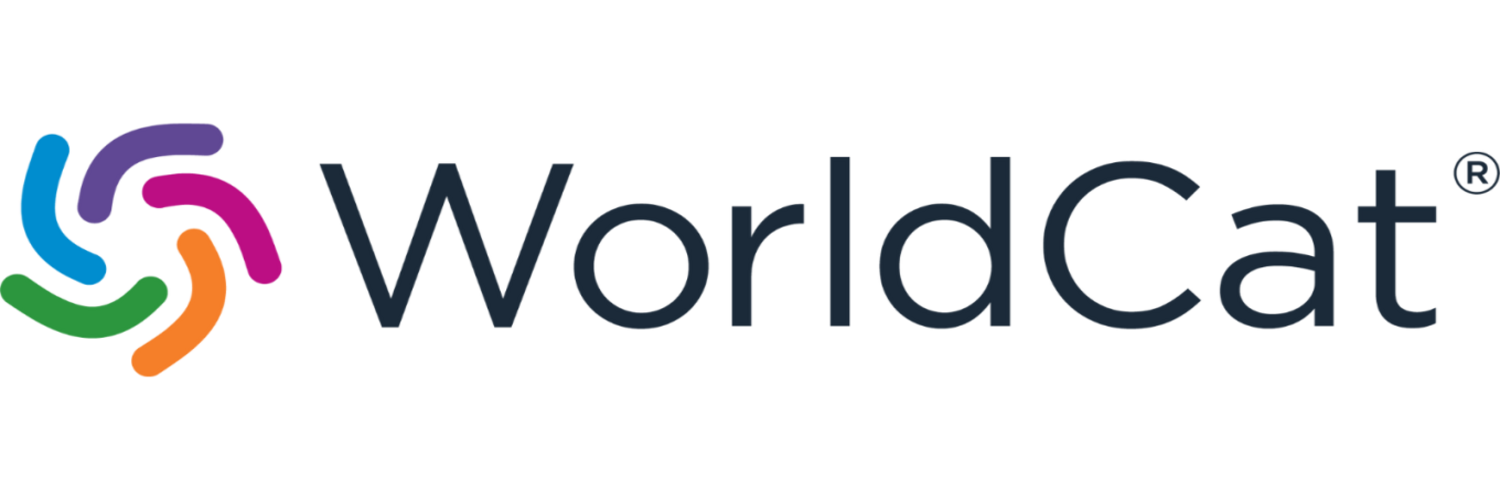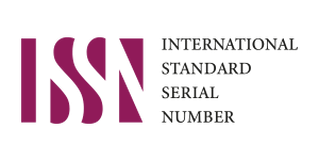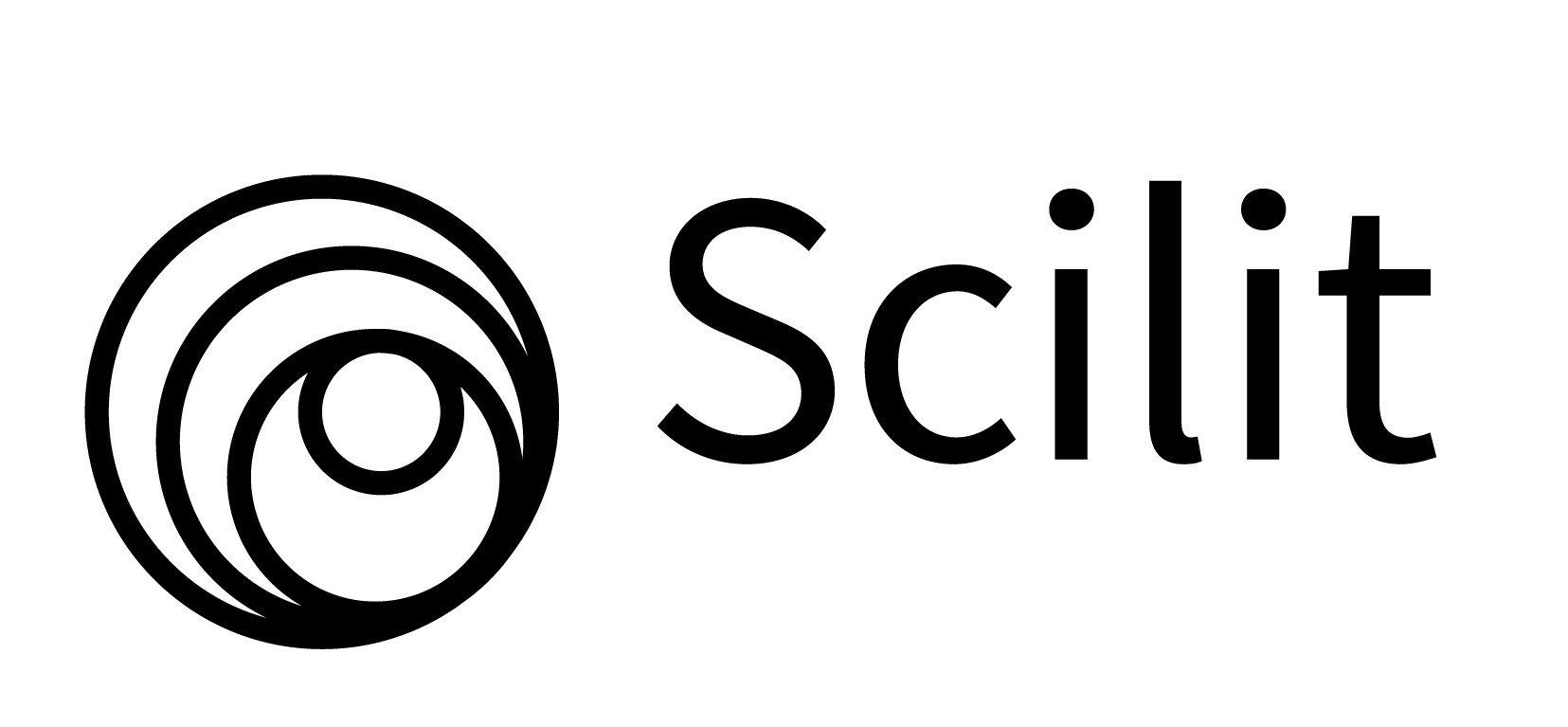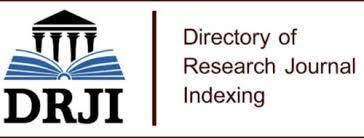Review Article
Barriers and Enablers for Early Detection of Women's Cancer in Yemen
- Dr. Amani Saleh Hadi Saeed
Corresponding author: Amani Saleh Hadi Saeed, M.B., B.CH. M.Sc., Specialist in Clinical Oncology and Nuclear Medicine, National Oncology Center-Aden/Yemen Head of Health Education unit for Arab Council of Academic and Competencies –a branch of Yemen. Membership in the Union of Afro-Asia Universities.
Volume: 2
Issue: 1
Article Information
Article Type : Review Article
Citation : Amani Saleh Hadi Saeed. Barriers and Enablers for Early Detection of Women's Cancer in Yemen. Journal of Medicine Care and Health Review 2(1). https://doi.org/10.61615/JMCHR/2025/JAN027140131
Copyright: © 2025 Amani Saleh Hadi Saeed. This is an open-access article distributed under the terms of the Creative Commons Attribution License, which permits unrestricted use, distribution, and reproduction in any medium, provided the original author and source are credited.
DOI: https://doi.org/10.61615/JMCHR/2025/JAN027140131
Publication History
Received Date
10 Jan ,2025
Accepted Date
25 Jan ,2025
Published Date
31 Jan ,2025
Abstract
Background: Cancer is the leading cause of death globally. Every year, millions of cancer patients could be saved from premature death and suffering if they had timely access to early detection and treatment. There are two main components of early detection: early diagnosis and screening. Early diagnosis is particularly relevant to cancers of the breast, cervix, mouth larynx, colon and rectum, and skin.
There are different barriers to screening may include; health insurance, low- income or worry about cost; Lack of access to care (such as a lack of transportation to the center), low education level, lack of child care or elder care fear of bad news or pain from screening procedure, cultural and language difference.
A continued increase in cancer deaths among low-income minority women is due, in part, to lower screening rates and later detection of cancer, with African-American and Hispanic women having some of the lowest rates of cancer screening. As such, efforts directed at increasing the cancer screening rates in low-income minority women are important in order to decrease the burden due to cancer deaths experienced by this population. Early diagnosis programs are comparatively easy and inexpensive to implement; since they cover symptomatic patients only, they are less extensive than screening programs that target the entire population.
This paper discusses barriers and enablers that impact access to early screening, detection, and diagnosis of cancer both globally and more specifically in women cancer in Yemen with a focus on the health system.
Study design: A systemic review of the literature.
Conclusion: There are a number of system changes that can be made to remove barriers to cancer screening. A larger health system assessment of a country is warranted to determine which health system changes should be made to most efficiently and effectively improve access to cancer screening.
There is a need for an effective health education program.
Keywords: Access; Barriers, cancer, detection, diagnosis, Enablers; Yemen, health system, Screening.
►Barriers and Enablers for Early Detection of Women's Cancer in Yemen
Amani Saleh Hadi Saeed1*
1M.B., B.CH. M.Sc., Specialist in Clinical Oncology and Nuclear Medicine.
Introduction
Cancer is the leading cause of death globally. Every year, millions of cancer patients could be saved from premature death and suffering if they had timely access to early detection and treatment.
WHO recommends cancer prevention as an essential component of all cancer control plans because about 40% of all cancer deaths can be prevented [1]. One in five deaths globally is attributed to cancer [3].
Breast self-examination (BSE) has been promoted for many years as a screening method for BC at an early stage, to decrease the risk of dying from breast cancer [1].
The practice of BSE has been reported in different countries. 12.5% in Indonesia [13] 11% in Yemen [14] 4.0% in Saudi Arabia [15], 37.6% in Ghana {16}, 15% in Cameroonian [17] town women had performed BSE regularly (monthly).
A country with inadequate resource facilities and poor health systems has to promote early diagnosis programs based on BSE, awareness of early signs and symptoms, and prompt referral to diagnosis and treatment [2].
While a progressive reduction in cervical cancer incidence and mortality has been observed in high-income countries due to effective screening and treatment programs, the reverse holds true in most low and middle-income countries (LMICs) [4]. A systematic review of factors that affect the uptake of cervical cancer screening in LMICs revealed that lack of knowledge and awareness, psychological barriers that include fear of pain, structural barriers such as unaffordable and inaccessible screening services, and socio-cultural and religious beliefs including husbands’ and family members’ objection, prevent women from screening [5].
The Republic of Yemen is a large country with various climatic, topographic, and environmental conditions. Its provinces are characterized by different social and genetic patterns. The cancer registry in Yemen is still a major challenge in the absence of national cancer surveillance, as the country lacks a National Cancer Registry Center (NCRC). According to the World Bank classification, Yemen is classed as among the lower-middle-income economies [6].
There are four cancer registries in Yemen: the Aden Cancer Registry (ACR), the cancer registry at the National Oncology Center, the Hadhramout Cancer Registry, and the more recent Taiz Cancer Registry; however, the last three were being run as hospital registries. Nevertheless, not enough national cancer-specific statistics are available and information on cancer patterns is still very limited. The PBCR in LMIC, including Yemen, often struggle with inadequate health services, transient populations, lack of funding, shortage of trained personnel, incomplete or inaccurate data, and the difficulty in establishing a reliable and reasonable cancer registry in the nation [7-8]. As a result, registries, such as those for cancer are not placed high among their priorities for action. Early diagnosis requires ensuring rapid patient presentation, diagnosis, and treatment as soon as first symptoms appear. It is relevant to all types of cancer.
Discussion
Screening: is relevant to a subset of cancer types only – namely cervical, colorectal, and breast cancers, which together represent 28% of cancer cases in the WHO European Region. In the case of cervical cancer, screening enables a cure at a precancerous stage of the disease with minor surgical treatments. This is not the case for breast cancer or for colorectal cancer screening by fecal occult blood test.
Barriers to Early Cancer Diagnosis and Treatment
Early diagnosis programmers focus on reducing delays between the detection of first symptoms and treatment by ensuring that
- People are sensitized enough to consult health professionals as soon as symptoms appear, without being delayed by any financial, logistical, or psychosocial barriers.
- The health staff reacted appropriately and rapidly, thanks to adequate training and clear referral guidelines.
- Diagnostic and treatment services are accessible rapidly and deliver optimal quality at an affordable cost.
Included these Factors
Psychosocial and Individual Factors
- Fear of cancer diagnosis
- Fear of screening outcome
- Fear of family rejection
- Stigma related to cancer
- Cancer is contagious
- Fear about treatment cost
- Prolonged treatment
- Lack of awareness about cancer
- Pain during screening procedures
- Misguidance from elders in the family
Time-Consuming Negligence
- Carelessness about their health
- Embarrassment
- Shyness to reveal their body parts
- Social stigma Cancer is the consequence of sin
- Cultural and financial factors
Family Barriers
- Lack of family support
- Lack of spousal support
- Responsibilities of women - household work/ child care
Economic Issues
- High screening cost
- Loss of income
Healthcare system-related factors
- Lack of trust in hospitals and doctors
- Lack of knowledge or skills about cancer screening among doctors
- Lack of trustworthiness toward private hospitals
- Unapproachable government doctors
- Non-availability of doctors in government hospitals
- Poor accessibility due to geographical location
- Male physicians and male technician
- Male health service providers
Enablers for Cancer Screening
-Intensification of Culture-Specific IEC Activities - Awareness generation
Advertisement media, mobile, pamphlets, women movie personalities, role models, colleges, camp awareness
Screening Camps and Awareness Programs
Policy changes – screen and treat,
Financial Support
- Government policies
- Make it mandatory by the government
- Make it reachable
Reduce the Screening Cost
Provide incentives to women doctors and lab technicians Appointing female health service providers.
Accurate cancer incidence in Yemen is unknown due to many reasons, such as limited diagnostic and clinical resources, as well as the poor quality of medical records. Furthermore, ongoing civil conflict has recently contributed to the ambiguity of the burden of cancer at the national level.
According to the GLOBOCAN estimation of the overall Age-standardized Rate (ASR) of cancer in Yemen (2020) of 97/100,000 population, with 92.7/100,000 in males and 102.2 in females [11]
Breast Cancer Screening Awareness and Practices Among Women Attending Primary Health Care Centers in the Ghail Bawazir District of Yemen
Pannal Amin Bawazer;2019{9}A cross-sectional descriptive study was carried out from November 1, 2016 through January 31, 2017. A total of 317 women who attended primary health care centers in the Ghail-Bawazir district during the study period were randomly selected for inclusion in the study.
Results
Very limited information on breast cancer was obtained from healthcare providers (14%). Around one-half of the respondents had satisfactory levels of breast cancer knowledge and awareness, whereas 30.3% were practicing self-breast examination, and only 1.6% had ever been exposed to a mammogram test. A significant association between marital status, level of education, working status, and level of knowledge and breast screening practice was reported (P = .01). By regression analysis, age and limited level of knowledge on self-breast examination were found determinants (P < .015) in factors associated with the use of clinical breast examination.
The study reveals the satisfactory knowledge of women about breast cancer along with inadequate awareness of breast cancer screening and screening practices. Oncology services in the country suffer from very limited radiotherapy care, chemotherapy centers, as well as many essential diagnostic laboratories for cancer.
Health care is guaranteed by the state as a right to all citizens under the Yemeni constitution. Historically, the Ministry of Public Health and Population (MoPHP) was responsible for the delivery of health care and overall health system governance. According to the World Health Organization/Regional Office for the Eastern Mediterranean (2018), Yemen’s health situation is one of the least favorable in the world, with various factors such as poverty (GNP = 7$/year), poor access to water and sanitation, low educational level mainly among women, and high fertility rates which led to worsening the health of Yemeni people [10].
Between January 2002 and December 2006, the population-based Aden Cancer Registry reported 334 cases of female breast cancer. This cancer was the first-ranked cancer among overall cancer sites (16.6%) and female cancers (30.3%) [18]. In Sana’a-Yemen, a study of the pattern of malignancies among 1,491 patients found that breast cancer ranked first among Yemeni women and formed 8% of all cancers (Al-Thobhani et al., 2001). On the other side, remote epidemiological studies about breast cancer in southeastern areas of Yemen reported breast cancer as the leading site of cancer among women in Aden city [19]. among Yemeni female patients with palpable breast lump, the rate of breast cancer is high which occurs at an earlier age than in Western countries. Improving breast cancer awareness programs and increasing breast cancer screening centers in different areas of Yemen are needed to establish early diagnosis and perform optimal treatment [20]. health system structures such as health insurance and care coordination systems, costs, time concerns, provider characteristics including the gender of the provider, quality of care issues, medical concerns, and fear. In addition, the following seven barriers and enablers were identified at the health system or provider level as significantly impacting screening for breast cancer:
- Access to insurance
- Physician recommendation.
- Physician gender.
- Provider characteristics.
- Having a regular provider.
- Fear of the system or procedure.
- Knowledge of the health system.
More specifically, the largest increased odds of having a mammogram were from having insurance, having a physician recommendation, type of provider (mainly a gynecologist), and having regular contact with a physician.
The future of cancer care in Yemen according to the National Cancer Program in Yemen gives a road map established for capacity building of principal elements through local and abroad training programs in different disciplines technical and managerial using short -term and long-term training mainly for surgeons, medical oncologists, radiation oncologists, pediatric oncologists, histopathologists, hematologists, epidemiologists, registry clerks, nurses, and other paramedics. Establishment of a reliable cancer profile in Yemen, which includes accurate data reporting of the registered cases, improved staging at diagnosis, and counting the survival rate of at least the common cancers. Establish a dedicated unit in the main hospitals to provide palliative care with the training of the oncologists in this field. Strengthening cooperation and collaboration with other oncology centers in the region as well as some international agencies to support the training and exchange of opinions in oncology medication. Encourage local capitals to invest in the diagnosis and treatment of patients with cancer, particularly those who need specific interventions such as stem cell transplantation and HIPEC procedures [12]
Conclusion
There are a number of system changes that can be made to remove barriers to cancer screening. A larger health system assessment of a country is a warranted to determine which health system changes should be made to most efficiently and effectively improve access to cancer screening. There is a need for an effective health education program.
Recommendation
- Research is needed to study the factors related to equity in health services for diagnosis, screening, and management of cancer patients in different regions of the country, with more focus, should be given to most people residing in rural areas.
- Yemen has been characterized by three decades of scattered, fragmented, and unfocused cancer research. Furthermore, much is needed to improve cancer care in Yemen through redesigned, better-organized, and well-functioning cancer facilities in the country according to clear developmental programs.
- Moreover, the National Cancer Control Plan seeks to address the inadequacy of cancer patient care services by integrating different services and aiming for the most effective and efficient use of existing, and, hopefully, additional resources, in an equitable way, for the whole population.
- It is necessary to focus on some priority areas, to ensure that some concrete steps are taken and that the best does not become the enemy of the good
- In spite of the fact that most cancers are related to modifiable risk factors, such as tobacco control, encouraging lifestyle, physical activity, and a balanced diet, it remains a major public health problem in Yemen.
- The involvement of primary healthcare physicians in counseling patients about smoking cessation or obtaining screening CT scans for high-risk patients is very limited.
- Digital mammography should be allocated in the main care centers in the main cities as the crucial first step in the training of female doctors to perform breast imaging.
- The same for colorectal cancer, colonoscopy units led by trained doctors in colonoscopy, are of great importance for early detection and to provide good outcomes.
- Educational campaigns should target tobacco control, encouraging hepatitis vaccination programs, use of mammograms, and human papilloma vaccination.
- WHO. (2020). Key prevention and control interventions for reducing cancer burden in the African region. 49.
- Roser M, Ritchie H. (2021). Burden of Disease. Our World in Data.
- WHO. Breast self-awareness (BSA). BMC Women's Health.
- World Health Organization. (2013). Comprehensive cervical cancer prevention and healthier future for girls and women.
- Devarapalli P, Labani S, Nagarjuna N, Panchal P, Asthana S. (2018). Barriers affecting uptake of cervical cancer screening in low and middle income countries: A systematic review. Indian J Cancer. 55(4): 318–326.
- WB. (2017). World Bank Country and Lending Groups. In: World Bank Data: World Bank.
- GICR. (2013). Global Initiative for Cancer Registry Development in Low- and Middle-Income Countries.
- Parkin DM. (2006). The evolution of the population-based cancer registry. Nat Rev Cancer. 6(8):603-612.
- panelAmen Bawazir 1 2, Najla Bashateh 3, Hoda Jradi 1, Ahlam Bin Breik 3. (2019). Clinical Breast Cancer. 19(1): 20-29.
- Bawazir,A, Basaleem,H, Ahmed Badheeb & Gamal Abdul Hamid. (2022). General oncology care in the Republic of Yemen. 331-338.
- IARC.In. (2022). cancer today: estimated age-standardized incidence rates (world) in 2020, all cancer, all ages (Yemen). Lyon: World Health Organization/international Agency for Research on cancer.
- Abdul Hammeed. (2024). Cancer diagnostic pathology centers in Yemen: annual report. National cancer control program.Minsitry of public health and population Aden .Yemen.
- Dewi TK, Massar K, Ruiter RA, Leonardi T. (2019). Determinants of breast self-examination practice among women in Surabaya, Indonesia: An application of the health belief model. BMC Public Health. 19: 1581.
- Al-Sakkaf KA, Basaleem HO. (2016). Breast cancer knowledge, perception and breast self-examination practices among Yemeni Women: An application of the health belief model. Asian Pac. J. Cancer Prev. 17(3): 1463–1467.
- Abolfotouh MA, BaniMustafa AAA, Mahfouz AA, Al-Assiri MH, Al-Juhani AF, Alaskar AS. (2015). Using the health belief model to predict breast self examination among Saudi women. BMC Public Health. 15: 1163.
- Dadzi R, Id AA. (2019). Assessment of knowledge and practice of breast self-examination among reproductive age women in Akatsi South district of Volta region of Ghana. PLoS One. 14(12): 0226925.
- Azemfac K, Christie SA, Carvalho MM, Nana T, Fonje AN, Halle-ekane G. (2019). A community-based assessment of knowledge and practice of breast self-examination and prevalence of breast disease in Southwest Cameroon. J. Cancer Epidemiol. 2019: 2928901.
- Amoran OE, Toyobo OO. (2019). Predictors of breast self-examination as cancer prevention practice among women of reproductive age-group in a rural town in Nigeria. Niger. Med. J. 56(3): 185–189.
- Ba Saleem HO, Bawazir AA, Moore M, Al-Sakkaf KA. (2010). Five years cancer incidence in Aden Cancer Registry, Yemen (2002-2006). Asian Pac J Cancer Prev. 11(2): 507-511.
- Bawazir AA, Abdul Hamid G, Moralles E. (1998). Available data on cancer on the South-Eastern governorates of Yemen. Eastern Mediterranean Health J. 4(1):107-113.
- Alsanabani JA, Gilan W, Saadi AA. (2015). Incidence data for breast cancer among Yemeni female patients with palpable breast lumps. Asian Pac J Cancer Prev. 16(1): 191-194.
Download Provisional PDF Here
PDF




p (1).png)




.png)




.png)
